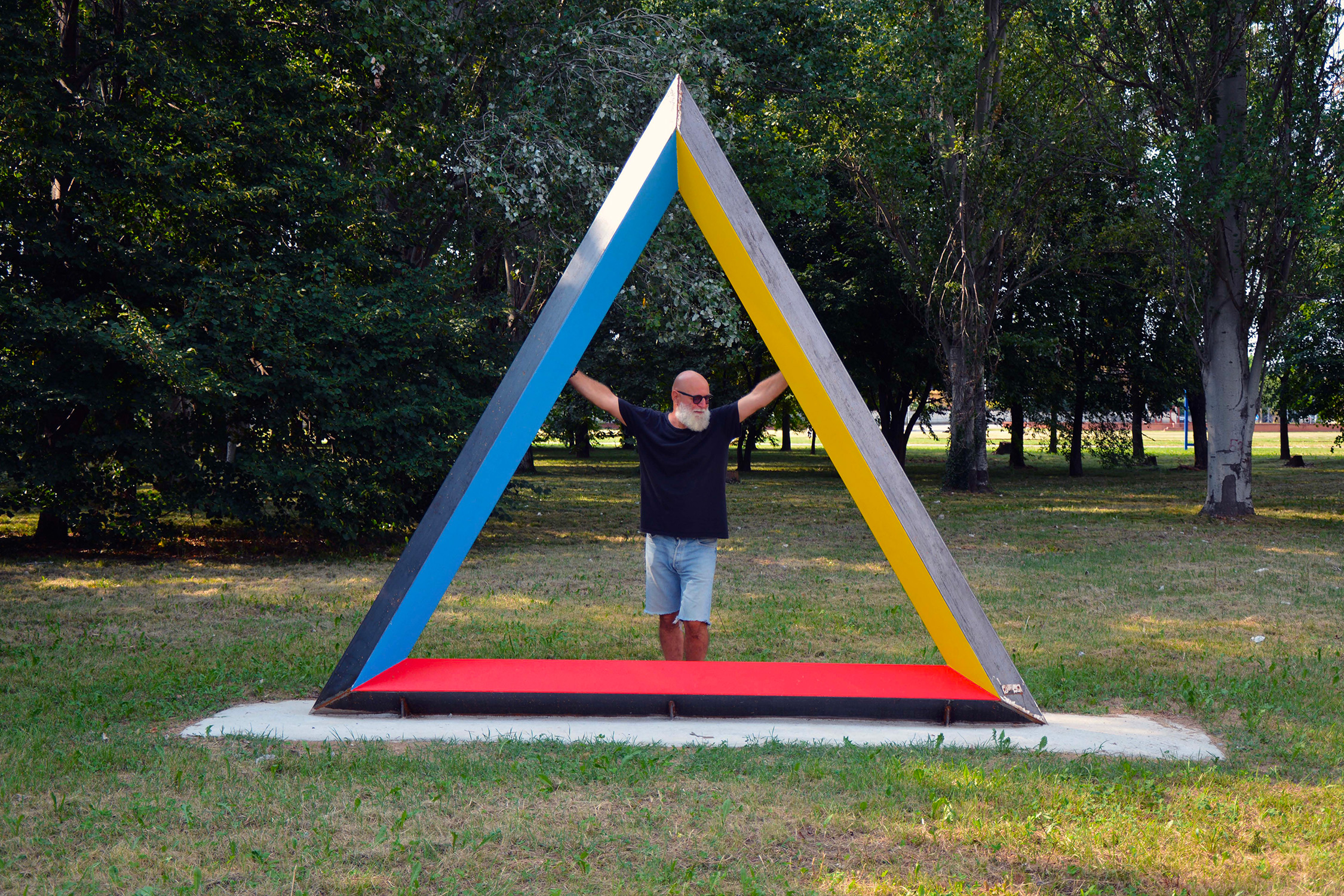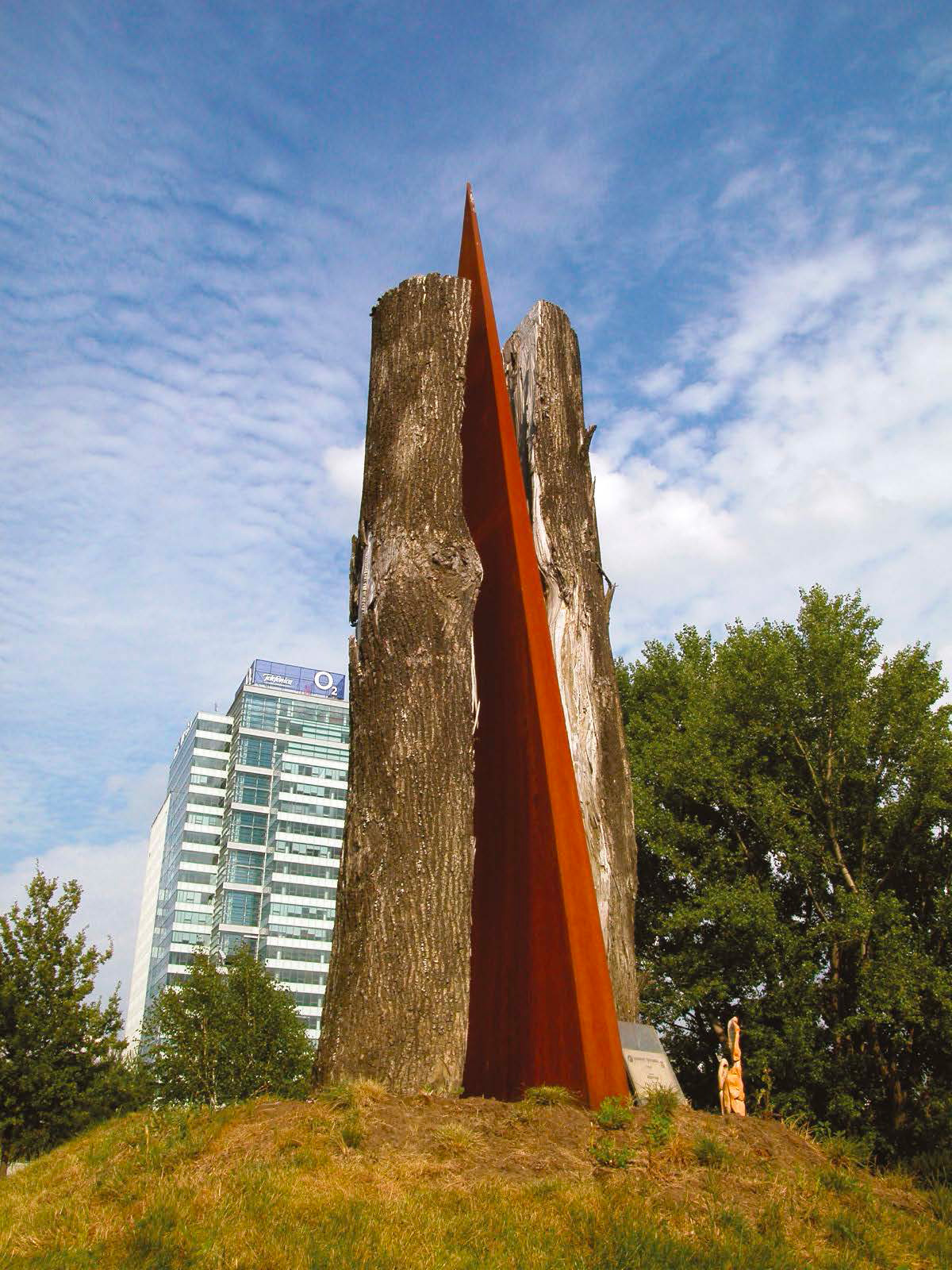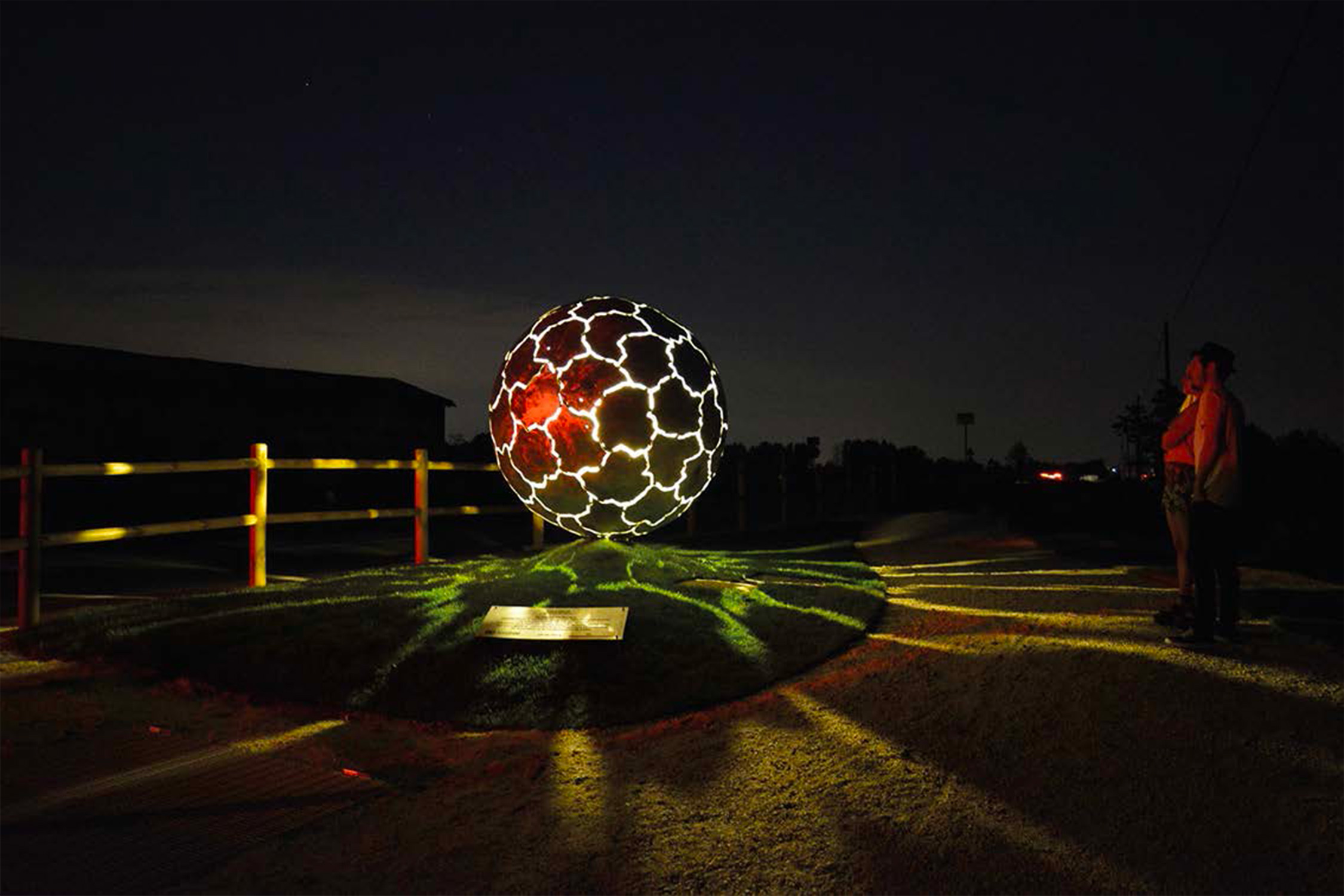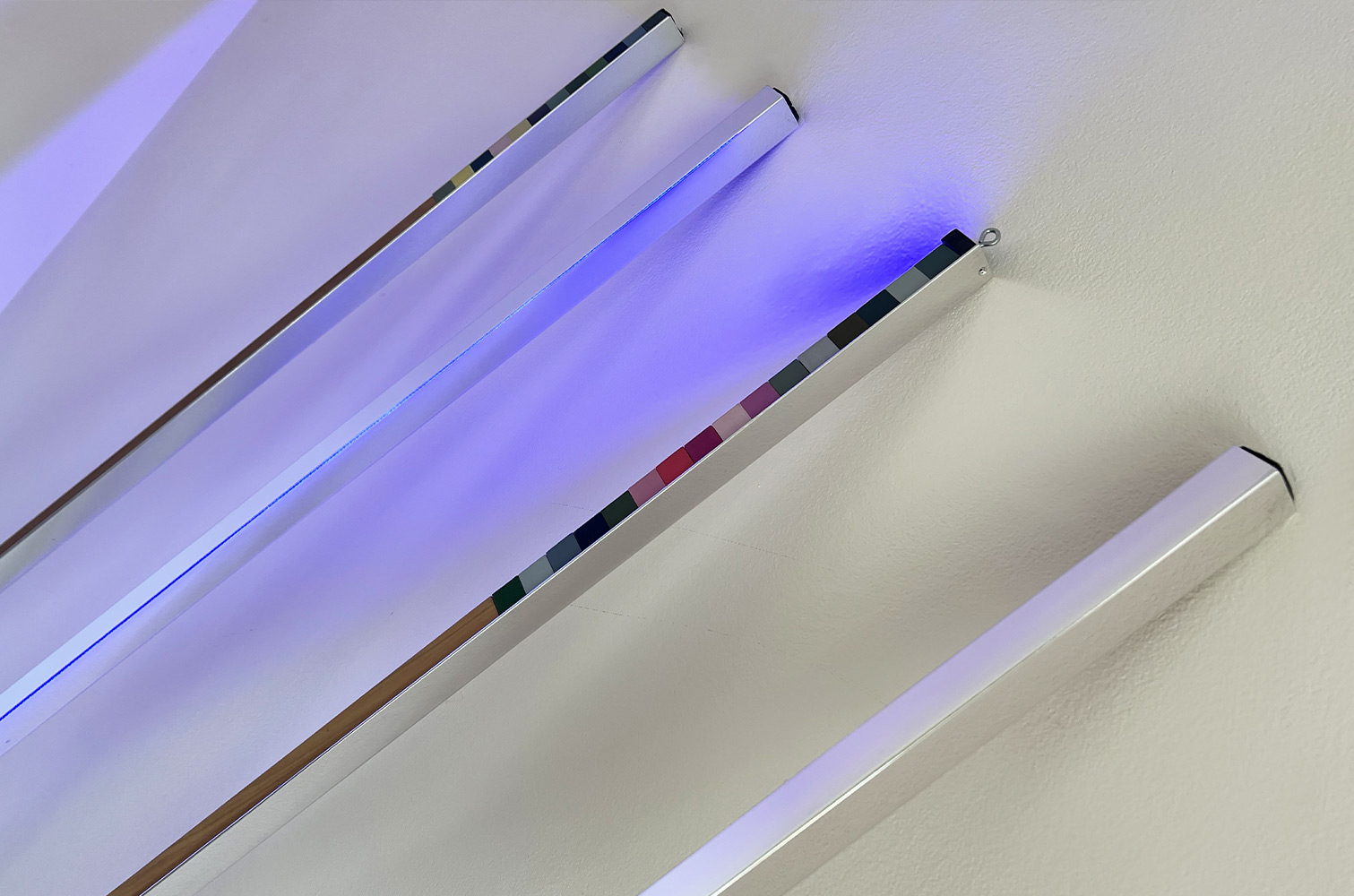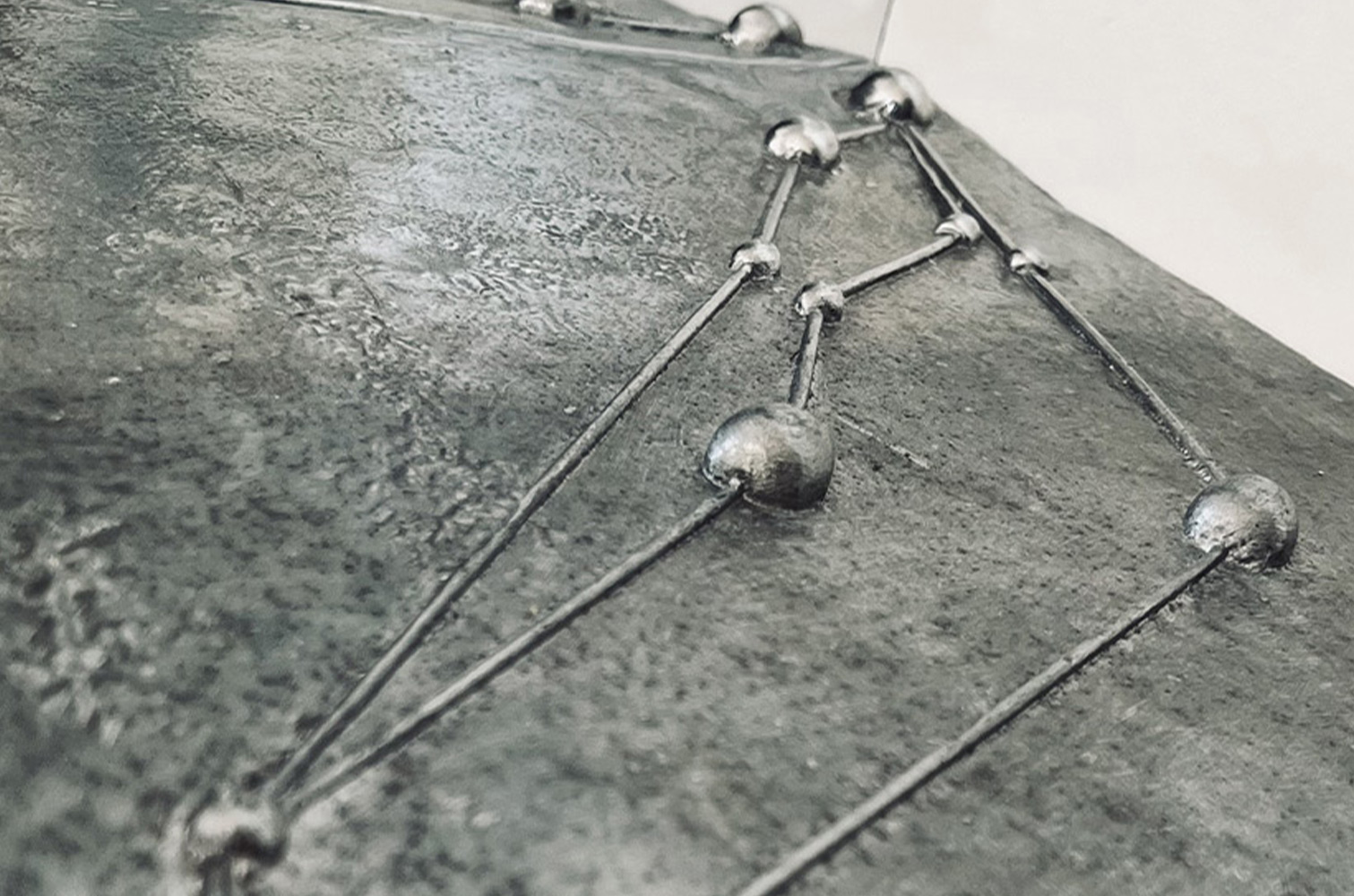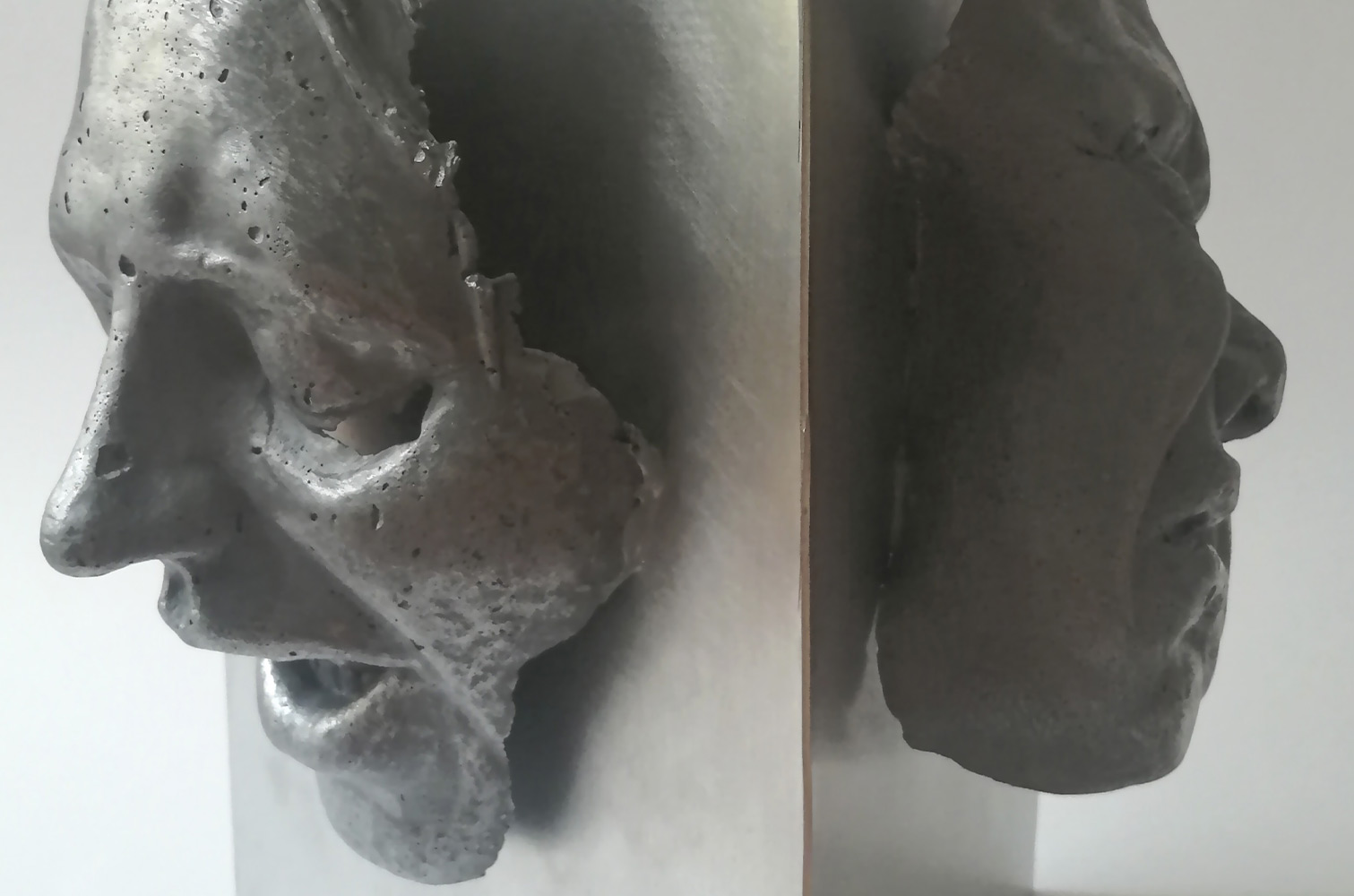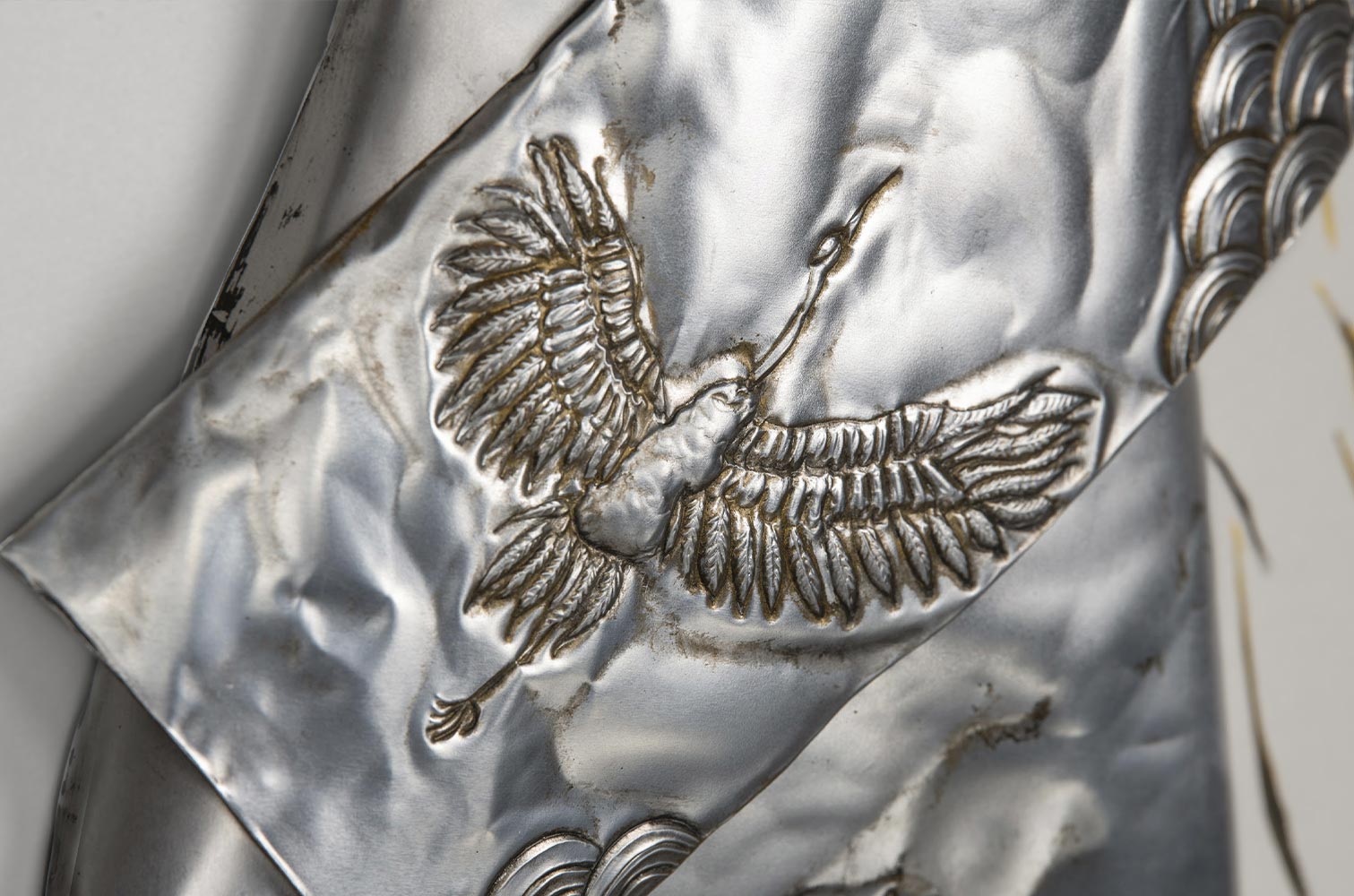COMEL AWARD FINALIST 20-21
Interview to Paolo Pompei
by Ilaria Ferri
Paolo Pompei is a sculptor, a material painter, and a photographer. He was born in Pietrarubbia (Montefeltro area). He experiments with ceramics under the guidance of Orazio Bindelli and then with metals following a course at the T.A.M. (Artistic Treatment of Metals) in Pietrarubbia, directed by Arnaldo Pomodoro. After his first steps in figurative art, his works became abstract, informal, minimal geometric, using primitive materials.
He is always experimenting with new materials, he is constantly looking for balance and harmony of forms. Over the years he has participated in various artistic competitions, exhibitions, he held courses on metal casting techniques, and participated in international sculpture symposiums. Since 2012 he teaches sculpture at the T.A.M. and teaches sensory sculpture courses.
1. In your biography we read that you come from Montefeltro, where you live and work. Here you trained at the Artistic Treatment Center of Metals (TAM) directed by Arnaldo Pomodoro, where you’re now a teacher yourself. How important have the territory and its peculiarities been in your artistic career?
Montefeltro is the land where I was born and raised, which inspired the great masters of the Renaissance, from Piero della Francesca, to Raffaello, born in Urbino, up to Leonardo da Vinci.
At first, when I was young, I felt the desire to escape from this land, which seemed too small for me who instead wanted to discover the world, but when afterward I came back I realized that the world I was looking for was already here. The silence of this land has allowed me to fully immerse myself in nature and my spirituality in order to understand who I am and to enable me to explore the deep bond that links me to my roots. This return to my origins was like a rediscovery of simplicity, of life: my works are often characterized by colours that refer to the nature of my land and by pure and essential shapes that, like the nature and silence of my land, invite to reflection, to inner research.
The art critic Lucio Del Gobbo, referring to your works, states “His polymaterial compositions, regardless of any extrinsic rule, exist as a timeless object, they evoke archaic forms, finds of who knows what civilization, pre-Columbian or Mesopotamia …” and same criticism came from Gabriella Niero “In silence, the large blue painted trunks evoke rites distant in time together with metal pyramids split by a central crack, wooden panels with disturbing combustion, sculptures and installations that act in harmony with contemporary reality but they also adhere to the obscure impulses of history ”. Therefore, you combine contemporaneity and history, modern and archaic. In your opinion, is Art a way to talk about Man, his primeval essence which, despite the passing of the centuries, is always the same as itself and at the same time in constant motion?
Art belongs to Man and vice versa. Art can be a tool through which we can speak about and give life to the essence, spirituality, and interiority of Man. In fact, my works, characterized by pure and geometric forms, are signs, and symbols. I do mean to put together two distinct parts: the physicality and the visual part of the work, with the interior and spiritual part, also thanks to the material which for me, together with the form, is the means through which to speak about man. Art has therefore always represented a container of spirituality, meaning and sense that has allowed and still allows people to reflect, to look inside, and therefore to see beyond the physicality of the work to communicate with the innermost part and discover the world and your own spirituality.
Divenire, Biennale of Soncino (BS, Italy), 2019
You deepened your knowledge on the anthropology of metal, along with studies on the primitive arts, what led you on this path? How much have these studies influenced your artistic research? In addition to wood, metals are the materials that you certainly use the most, what does it mean for you to mold a metal? And what can you tell us about aluminum? When did you find it out? How do you choose the type of metal to use in each work?
I have always been fascinated by materials, for their ability to be shaped and thus become their own work.
Metal is one of the materials that fascinates me most and its processing is something primordial and ancient, which has always accompanied the history of man, and, therefore, somehow inherent within us. The research in primitive art and therefore also in processing techniques, including that of metal, represented for me a return to the origins of Man, to the discovery of human identity, which allowed me to know the essence and spirituality, leading me to the definition of a more synthetic sign and pure forms, yet dense with meaning.
Metal is a material capable of containing mysterious and lively energy because it is in constant change of state and shape: shaping it allows me to investigate inside myself, to ask myself questions to bring out what is already inside the matter, but only through processing all this can come out. For me, metal is transformation: the ability to create something else, deep down and within us, to give shape to our feelings.
Aluminum is a rather contemporary metal, which is widely used, very light, so much so that it is also used in the aviation industry, therefore used by man to fulfill one of his greatest dreams he has always had: flying.
For me it is a wonderful material, which I have used a lot over the years for my works of art: it is a noble, divine material because it continuously relates to the Light. In fact, one of its greatest qualities is that of reflecting light, making it shine and exalt it, and, at the same time, it is an iridescent material, therefore capable of itself changing the chromatic finish with the variation of the incidence of light. That’s why it is used, together with gold and silver, in the sacred arts to represent the Divine king.
Aluminium, therefore, for me, represents a means through which to express the spirituality of Man and the inner search also for its ability, if properly polished, to become a mirroring surface: it, therefore, becomes a material in which to reflect oneself, to see oneself, to know oneself better, in order to understand each other and investigate within oneself.
“For Pompeii, the important thing is not the immediate message, but the method, the execution of the work, the gesture that becomes matter and the juxtaposition of empty spaces with solid ones, of horizontal and vertical tensions …” Says the critic and art historian Jacqueline Ceresoli. In your opinion, is the gesture really more important than the work itself, continuing the tradition of many 20th-century avant-gardes? Your works actually offer well-defined meanings, communicate a very clear idea and the matter has a prominent place in your works.
Il gesto è qualcosa che si compie, è la manifestazione fisica e tangibile di un pensiero interiore che si manifesta quindi esteriormente. È un movimento che vuole indurre tanto chi lo produce quanto chi lo vede ad indagare nel profondo di sé, alla scoperta di un mondo interiore che già c’è ma deve essere solo esplorato. Per questo le mie opere sono minimali, essenziali e geometriche. Sono forme pure che invitano al silenzio e alla meditazione, dove la componente materica è forte e diventa essa stessa opera, ma anche gesto e movimento: non è solo un mezzo rappresentativo, ma vuole uscire dalla forma, per rivelare in modo tangibile ciò che ha dentro. L’opera quindi è fatta di forma e materia volte a sprigionare vita, energia e spiritualità.
External Art Installation, Incheba Expo Bratislava (Slovakia), 2006
You define yourself as a sculptor, a painter of materials, and a photographer. Three different aspects of your artistic universe, how do you choose which one to use? How does your creative process develop?
Sculpture, like material painting and photography, is for me means through which to express an inner feeling, a thought, and a meditation. They are different only in what the physical and tangible result could be, but they are always the result of an idea, in the etymological sense of seeing, acknowledging, and knowing. And this is the intent of my works: to allow people to think, to go beyond what is seen.
Mine is interior work, but also an exterior one, which I then elaborate in a form, thus externalizing my emotions, what I feel and live inside. The work is therefore a form, an essence, a representation that comes from deep feeling, from the search for oneself.
You travel a lot and often do so in order to attend symposia and conferences around the world. How important is it for you, and for the way you make art, to compare yourself with other artists and share your path, your knowledge, and your discoveries?
I was able to travel a lot for symposia and conferences and meet people and artists from all over the world and with them to compare and talk not only about Art, but also about Life and Man. It is something that enriches you every time, which allows you to dig inside and discover that there is always something in common, which belongs to the very identity of the human being, to an archetype. The comparison is useful and important for personal and spiritual research and to discover how in the end, even if we are apparently different from those who live on the other side of the world, we all belong to the same Nature.
Umus, Meano (BS, Italia), 2016
Among your various activities, you also hold courses in sensory sculpture, what is it about?
The sensory sculpture is an inner journey as it is a free creative moment, which investigates within. It is a process in which, blindfolding me or those who participate in my courses, I create works of art only based on inner feelings because, without the use of sight, which refers to the external and therefore rational world, I let myself go, activating my inner eye which is nothing more than the imagination, understood as the ability to create true and authentic images that belong to our being. It is the imagination that then guides touch to give life to matter: touch, after sight, is the most important sense for creating works of art, and therefore the hands, touching the materials, are able to perceive reality and create new shapes, the result of inner investigation and imagination.
And this is how we discover something that belongs to us, something that ultimately defines our true essence and identity, which is already within us and which only comes out when we strip ourselves of physical reality.
You participated in the eighth edition of the COMEL Aluminium Bonds Award with the work Globalization, a splendid aluminium casting that proposes a particular idea of the proposed theme, which blends a highly topical topic with a veiled invitation to preserve not only our planet but also our humankind. Where did the idea of this work come from and why did you decide to present it to the competition?
An iridescent aluminium sphere, like a living core full of energy, is made up of many different parts but at the same time capable of interlocking with each other and held together by an inner soul which is the one that binds all populations, which in the end is nothing but the Universe itself to which we belong to.
So many different elements just like us as humans, but we are all guests on this wonderful Earth. And therefore, in a historical moment like this, where globalization is intended as a phenomenon of economic, cultural, sociological, and anthropological standardization, mine is an invitation to reflect on a Globalization where everyone, with their own diversity to be preserved, can discover the own unique world, both true and internal and can build a bond with others to respect not only Nature but Humanity itself.

